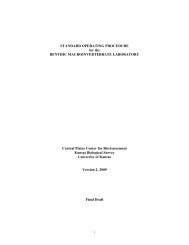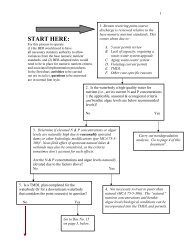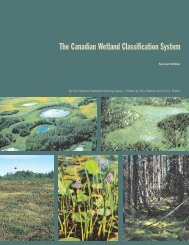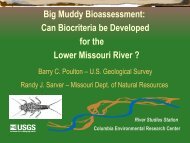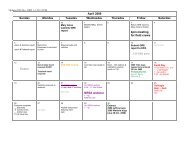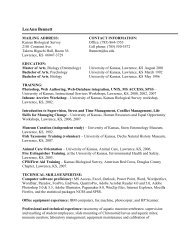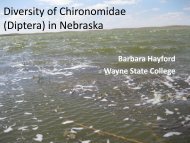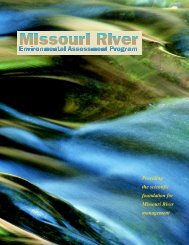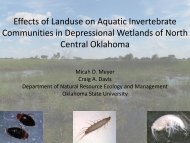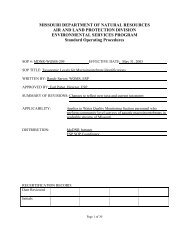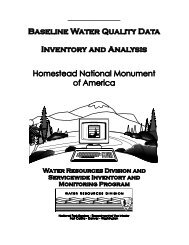Koontz, J., D.G. Huggins, C.C. Freeman, D.S. Baker - Central Plains ...
Koontz, J., D.G. Huggins, C.C. Freeman, D.S. Baker - Central Plains ...
Koontz, J., D.G. Huggins, C.C. Freeman, D.S. Baker - Central Plains ...
You also want an ePaper? Increase the reach of your titles
YUMPU automatically turns print PDFs into web optimized ePapers that Google loves.
other wetland parameters and assessment outcomes developed in this study. As an index of<br />
biological integrity (IBI), the macroinvertebrate MMI was developed by scrutinizing the stressorresponse<br />
relationships between the chemical and physical measures, and components of the<br />
benthic macroinvertebrate community. Results of the macroinvertebrate MMI were consistent<br />
with other studies using invertebrate metrics for assessing the biological integrity of aquatic<br />
ecosystems when comparing the reference and random sample populations. The developed MMI<br />
was then tested for congruency with the other assessment results, relationships to hydrological<br />
connectivity, and internal wetland structural features that were evaluated. The macroinvertebrate<br />
MMI responded significantly to observed physical and chemical anomalies, and provided insight<br />
to dominant wetland features such as landscape, hydrology, water chemistry, and plant<br />
communities, that influence wetland conditions.<br />
Methods<br />
Site selection<br />
During Phase I (e.g. reference wetland identification, characterization, development of<br />
assessment tools) of this two-part study, geospatial data from several sources were analyzed<br />
using ArcView 3.3 and ArcGIS. From this a map was developed of all wetlands in the lower<br />
Missouri River valley. We also developed a flooding model that identifies flood-prone areas<br />
within the valley. NWI maps were merged into a single seamless data theme for the entire study<br />
area, and a 500-year floodplain boundary was used to select wetlands within areas of interest.<br />
Two classes of wetlands (as defined by Cowardin et al. 1979) were studied: lacustrine and nonwoody<br />
palustrine.<br />
Wetlands were filtered by size (i.e. surface acres) to identify those that meet our minimum size<br />
criterion of 10 acres in area. Imposition of this wetland size criterion was done for four reasons.<br />
First, it ensures a high likelihood of open water during spring to early summer. Second, larger<br />
sites have a higher probability of being correctly classified in the NWI database. Third, larger<br />
sites generally support higher levels of native biodiversity, more wetland functions, and greater<br />
wildlife value. Fourth, bigger wetland area are more likely to be in public ownership and<br />
therefore more likely to have been studied in the past.<br />
For this Phase II study, from the population of wetlands meeting the location, class, and size<br />
criteria, 400 were identified using EMAP selection protocols. From this population, 42 study<br />
sites were selected randomly within a spatially hierarchical sampling framework called<br />
Generalized Random Tessellation Stratified Designs (GRTS) (Figure 1). In GRTS, a hexagonal<br />
grid is imposed on the map of the target population. The grid scale is adjusted to appropriate<br />
levels of resolution. Grid elements (and sampling units) are then randomly selected using a<br />
robust, selection algorithm. GRTS simultaneously provides true randomness, ensures spatial<br />
balance across the landscape, and enables the user to control many parameters.<br />
7 of 84



